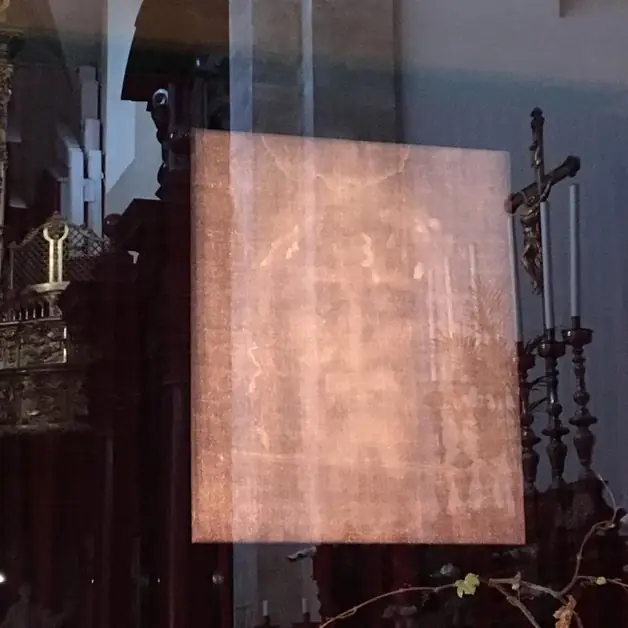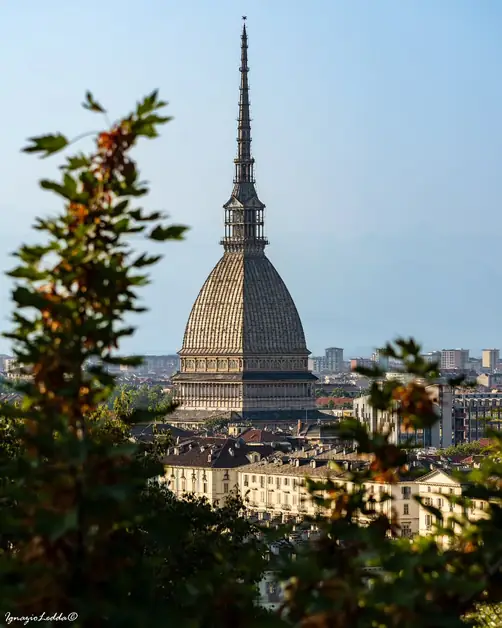The Shroud of Turin between faith and mystery
The Shroud of Turin is a symbol of faith and mystery.

What is the Shroud of Turin?
The Shroud of Turin is one of the most famous and mysterious religious artifacts in the world. It is a linen cloth approximately 4.4 meters long and 1.1 meters wide, on which appears the image of a man who seems to have been crucified. Many believe that this cloth is the shroud that wrapped the body of Jesus Christ after his crucifixion. Others, however, consider it an extraordinary work of art or an unresolved mystery of science.
When and where does the story of the Shroud begin?
The story of the Shroud of Turin is long and fascinating. The first historical document mentioning it dates back to 1353, in France, in the small church of Lirey. There, a knight named Geoffroy de Charny first displayed the cloth to the faithful. Later, the Shroud passed into the hands of the Dukes of Savoy, who in 1578 decided to transfer it to Turin, where it remains today.
Why is the Shroud considered so important?
The Shroud is considered important not only for its religious value but also for its scientific mystery. The image imprinted on the linen is neither painted nor engraved, and it is still uncertain how it was formed. In-depth studies conducted throughout the twentieth century have not fully explained the phenomenon. For believers, this image represents a sign of the passion and resurrection of Jesus.
Where is the Shroud of Turin located today?
Today, the Shroud is kept in the Cathedral of Turin, inside the Chapel of the Holy Shroud, a baroque structure attached to the Cathedral of Saint John the Baptist. This chapel, designed by architect Guarino Guarini, is a masterpiece of sacred art in Turin and a place of great suggestion. The Shroud is housed in a climate-controlled case, protected by security systems and constant monitoring of temperature and humidity.
Is it possible to see the Shroud of Turin?
The Shroud is not always visible to the public. The so-called "extraordinary exhibitions," or ostensions, are organized on special religious occasions, such as the Jubilee or significant anniversaries. During these ostensions, thousands of pilgrims and tourists from around the world come to Turin to admire it. In periods when it is not on display, visitors can still enter the Chapel of the Holy Shroud and visit the Museum of the Shroud.
How much does it cost to see the Shroud of Turin?
When the Shroud is on display, the visit is free, but it is necessary to book entry to manage the long lines of the faithful. For the Museum of the Shroud, however, a small admission fee is required. Updated information on costs and dates of the ostensions is published on the official website of the Shroud of Turin and that of the Archdiocese.
What can you see at the Museum of the Shroud?
The Museum of the Shroud is located at Via San Domenico 28, in the historic center of Turin, and offers a fascinating journey that combines faith, history, and science. Here you can admire high-definition reproductions of the cloth, three-dimensional models, tools used during scientific studies, and videos that tell the story of the research conducted over the years. The museum allows for a better understanding of the investigations carried out and the spiritual significance that the Shroud holds for millions of believers.
Is the Shroud authentic?
This is one of the most debated questions. Carbon-14 tests conducted in 1988 dated the cloth between 1260 and 1390, suggesting that it was not from the time of Jesus. However, many scholars have contested those results, arguing that the samples taken were contaminated or came from a part of the fabric restored in medieval times. The Catholic Church has never officially expressed its position on the authenticity of the Shroud, leaving believers the freedom to believe or not in its sacred origin.
What is the connection between the Shroud and Turin?
The Shroud is an integral part of Turin's identity. The city has kept this symbol for over four centuries, making it a spiritual reference point. Every time it is displayed, Turin transforms: churches organize events, museums propose thematic exhibitions, and the streets fill with pilgrims. It is a moment of encounter between faith, culture, and tourism.
How do you get to the Cathedral of Turin to see the Shroud?
The Cathedral of Turin is located in Piazza San Giovanni, in the heart of the city, a short walk from Piazza Castello and the Royal Palace. It is easily reachable on foot from the center or by public transport. From the Porta Nuova train station, you can take a tram or bus towards Piazza Castello and walk for about five minutes. For those arriving by car, there are several paid parking lots nearby.
What to see around the Shroud?
After visiting the Cathedral and the Chapel of the Shroud, you can discover other wonders of Turin. A short walk away are the Royal Palace, Palazzo Madama, and the Sabauda Gallery. Continuing along Via Roma or Via Garibaldi, you can easily reach Piazza San Carlo, one of the most elegant squares in Italy. History lovers can also visit the Egyptian Museum or the Museum of the Risorgimento, both among the most important in Europe.
Why visit the Shroud of Turin?
Visiting the Shroud means coming into contact with one of the greatest testimonies of faith in Christianity and, at the same time, with a mystery that has fascinated scientists and believers for centuries. Even those who are not religious are struck by the symbolic power and beauty of the place where it is kept. Turin also offers an ideal context to experience a blend of culture, art, and spirituality in a single visit.
When will the next exhibition of the Shroud of Turin take place?
There is no fixed calendar for public ostensions. However, on special occasions, such as the Jubilee or particular anniversaries, the Diocese of Turin may decide to organize a new exhibition. The last ostensions took place in 2010 and 2015, attracting millions of visitors. To find out when it will be possible to see it again, it is advisable to periodically check the official website of the Shroud or that of the Diocese of Turin.
What is the spiritual significance of the Shroud today?
For many Christians, the Shroud represents a sign of hope and faith. The image of the suffering man imprinted on the linen invites reflection on pain and redemption. Even for those who do not believe, the Shroud remains an extraordinary historical and cultural testimony, a symbol that unites humanity in the search for truth and the meaning of life.




